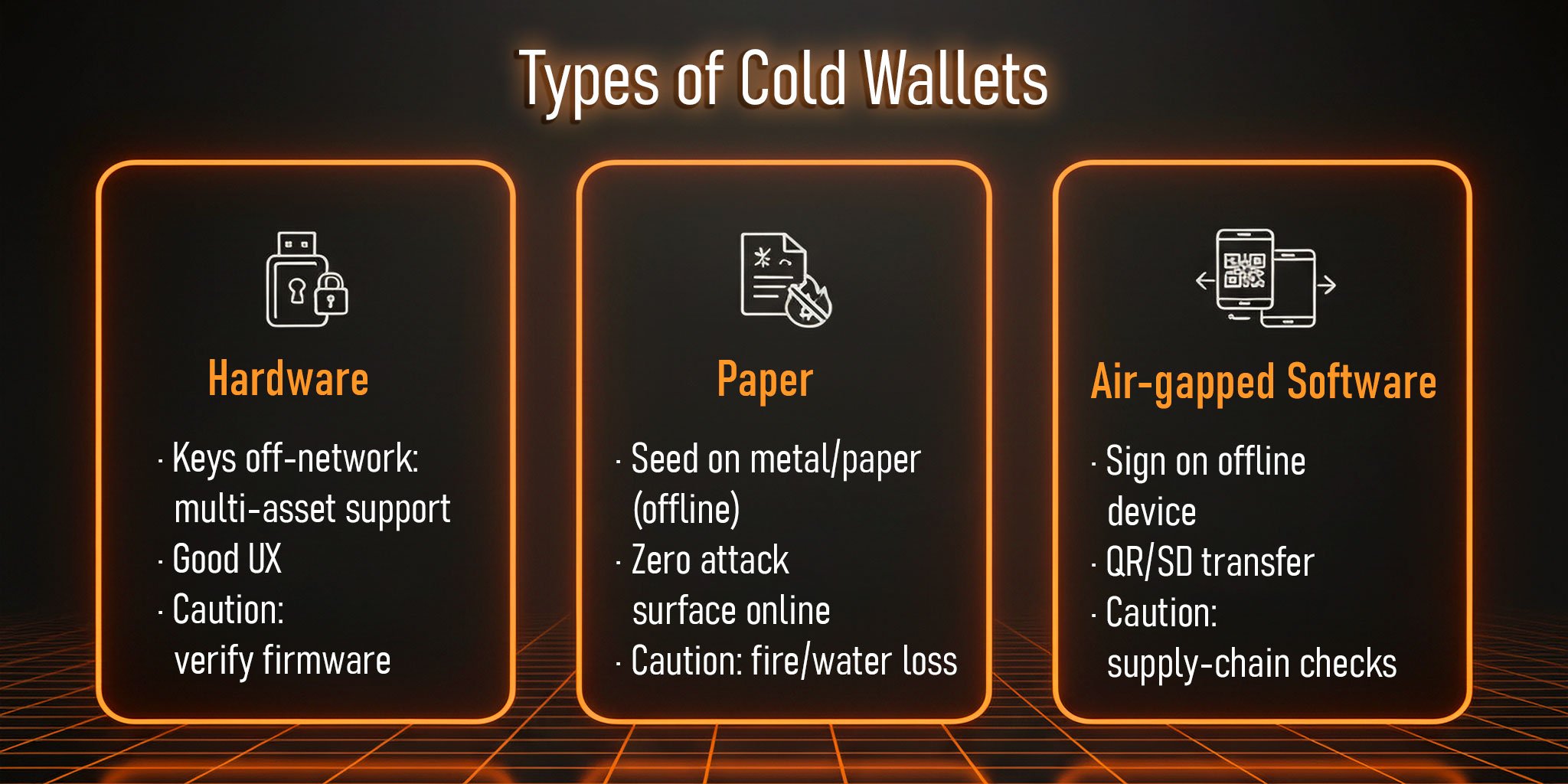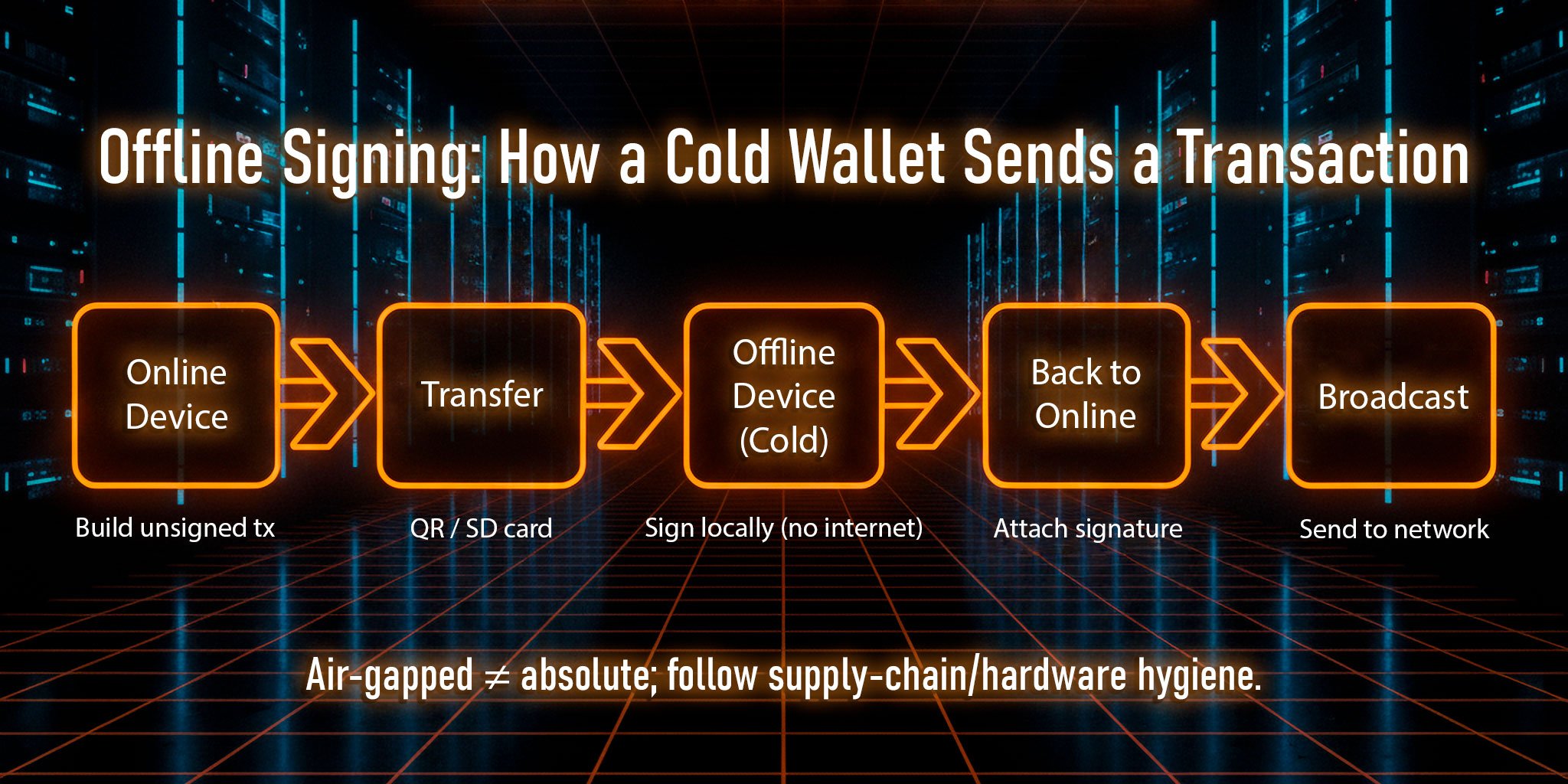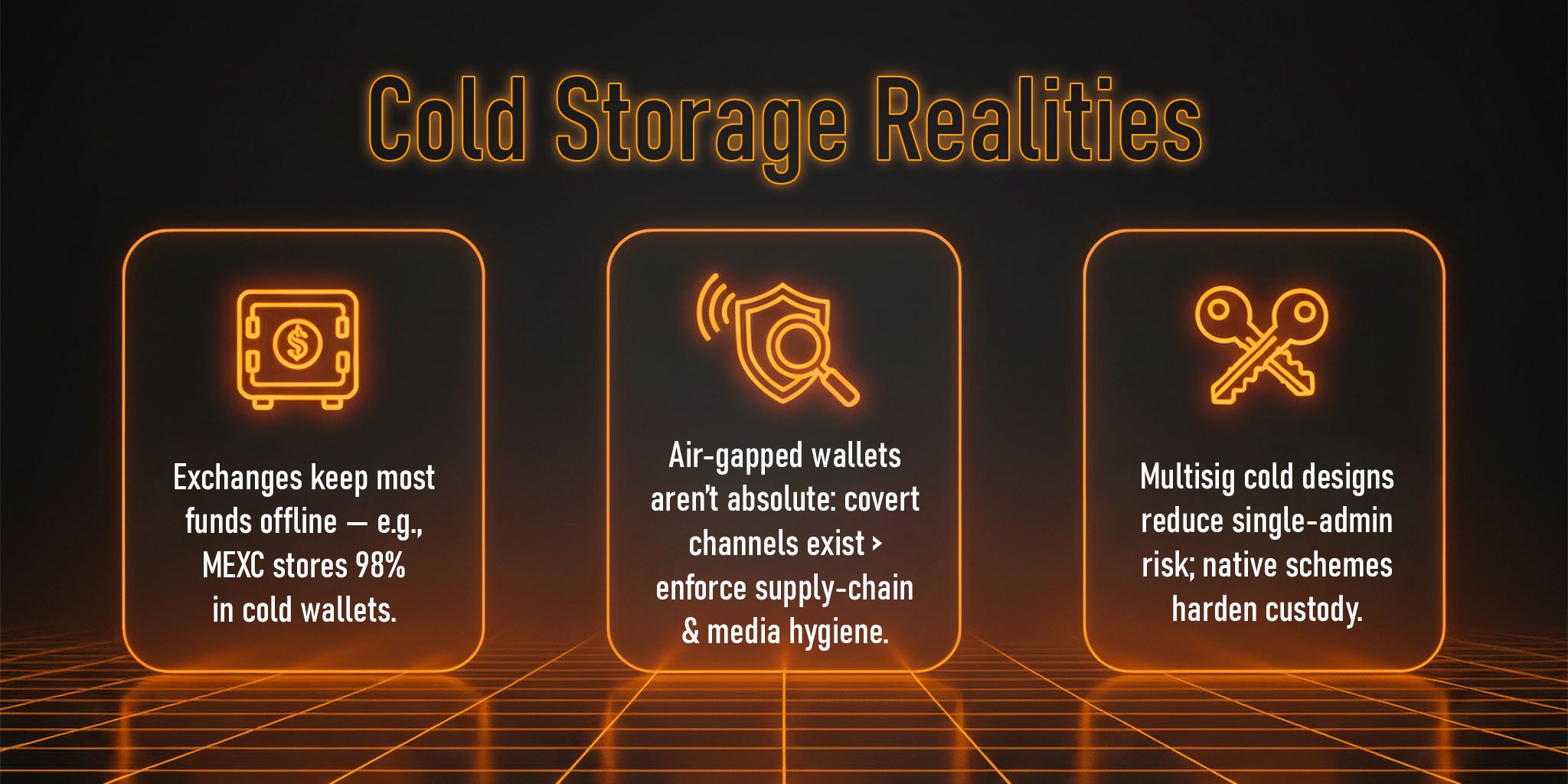
TRON Fee Reduction 2025: What's Changed After Proposal #104
Proposal #104 halved TRON fees in 2025. This article explains the new USDT TRC-20 rates and how users can save even more on transfers.
2025-09-01
Hardware, paper, and air-gapped wallets — which should a beginner choose? We’ve put together a guide to safe cryptocurrency storage.
In the world of cryptocurrency, the security of your funds is paramount. The sagas of exchanges like Mt. Gox, FTX, and others are stark reminders that entrusting your assets exclusively to online platforms is a risky game. In 2025, as users of TRON, Ethereum, Bitcoin, and other blockchains regularly transfer millions of dollars, the need for secure crypto storage is more critical than ever.
In this article, we’ll break down:
The goal of this guide is to help investors and traders build a secure architecture for storing and transferring crypto assets, minimize the risk of loss, and optimize transaction fees.
A Cold Wallet is a device or software that stores your private keys completely offline, without any internet connection. This makes it almost entirely immune to hacks, phishing attacks, and exploits.
A Hot Wallet operates online, providing quick access to funds and integration with exchanges and DeFi services. However, this online connectivity increases the risk of private key compromise and asset loss.
Advantages of a Cold Wallet:
Disadvantages:
For active USDT TRC-20 traders on the TRON network, a cold wallet adds an essential layer of security, protecting against unauthorized access resulting from exchange hacks or fraudulent platforms.

Cold wallets are categorized into several types: hardware devices, paper solutions, and air-gapped software devices. Each category has unique features suited for different types of users.
Hardware Wallets
Popular models in 2025:
The key advantages of hardware wallets include their support for multiple assets, like TRX and USDT TRC-20, and the complete isolation of keys from the network, providing a shield against all online threats.

Hardware wallets offer the optimal balance of security and convenience, especially for traders and investors managing large sums and periodically making USDT TRC-20 transfers using services like Tron's energy rental to save on fees.
Paper Wallets
A paper wallet is a pair of private and public keys printed on paper, usually as QR codes. This method allows you to receive and store cryptocurrency offline. Unlike a seed phrase, which restores a full HD wallet, a paper wallet is tied to a single address. This method is outdated and rarely used due to risks like paper degradation, loss, and difficulty in creating backups.
Advantages:
Air-Gapped Devices and Specialized Solutions
Air-gapped devices are computers or specialized hardware completely isolated from the internet. They run software wallets that generate and sign transactions offline. Data is transferred to an online device via QR code, USB drive, or another isolated method.

These solutions are suited for technically advanced users, funds, and companies with large crypto turnovers. They are more complex to set up and maintain but minimize the risks of online hacks. For most individual investors, a hardware wallet with a backed-up seed phrase is sufficient.
Cold wallets are more than just a "safe" for crypto. They form a strategic layer of asset protection:
Combining hot and cold wallets creates a balance between security and accessibility. Hot wallets for quick trades and operations, cold wallets for secure HODLing.
For those new to cold crypto wallets, the choice can seem daunting. Focus on these key criteria:
For a beginner, the most reliable storage method in 2025, balancing all factors, is a mid-range hardware wallet, such as:
The right cold wallet allows you to manage assets securely and use fee-saving tools like Tron Pool Energy.

Cold crypto wallets are a strategic layer of asset protection, enabling you to control your funds without the risk of losing access during an exchange or service hack.
The golden rule: your seed phrase is the key to all your funds. Keep it in a secure location, never share it, and combine storage methods for maximum security.
A cold wallet is a device or paper medium that stores a user's private keys offline, without an internet connection. The balances themselves are always on the blockchain; the wallet just holds the key that proves your right to manage them.
Yes, modern Ledger and Trezor devices support TRON and USDT TRC-20 tokens. However, you'll need to use a software wallet interface (like TronLink or Trustee) to sign transactions.
If the device is lost, the most important thing is your backup seed phrase. It allows you to restore access to your funds on a new device or a compatible wallet. Without the seed phrase, access cannot be recovered.
It's risky. It is best to buy devices directly from the official manufacturer or authorized resellers to eliminate the risk of tampering or pre-installed malware.
Even with offline storage, you can save on fees for USDT TRC-20 transfers by using services like Tron Pool Energy. On the TRON network, fees can be paid not only with TRX but also with the network's internal resources. Since TRON Energy is linked to a specific address, not a device, you can: